Festivals
The Mater Larum may have been offered cult with her Lares during the festival of Larentalia as she was, according to Macrobius ( floruit 395 - 423 AD), [5] during Compitalia. Ovid, in his Fasti II, 571 ff poetically interprets what may be a variant of her rites at the fringes of the Feralia: an old woman squats among a circle of younger women and sews up a fish-head. She smears this with pitch then pierces and roasts it; this, she says, binds hostile tongues to silence. She thus invokes Tacita (silence). If, as Macrobius proposes, the Lemures are unsatiated and malevolent forms of Lares, then they and their mother also find their way into Lemuralia, when the vagrant and malicious Lemures and (perhaps) Larvae must be placated by midnight libations of spring-water and offerings of black beans, spat from the mouth of the paterfamilias to the floor of the domus. Again, Taylor notes the chthonic character of offerings made to fall – or deliberately expelled – towards the earth.
Varro (116 BC – 27 BC) believes that she and her children were originally Sabine and names her as Mania; the name is used by later Roman authors with the general sense of an "evil spirit". In the late 2nd century AD, according to Festus, nursemaids use the name of Mania to terrify children. Macrobius applies it to the woolen figurines (maniae) hung at crossroad shrines during Compitalia, thought to be substitutions for ancient human sacrifice once held at the same festival and suppressed by Rome's first consul, L. Junius Brutus. [6]

Mercury is a major god in Roman religion and mythology, being one of the 12 Dii Consentes within the ancient Roman pantheon. He is the god of financial gain, commerce, eloquence, messages, communication, travelers, boundaries, luck, trickery, and thieves; he also serves as the guide of souls to the underworld.

The Ides of March is the 74th day in the Roman calendar, corresponding to 15 March. It was marked by several religious observances and was notable for the Romans as a deadline for settling debts. In 44 BC, it became notorious as the date of the assassination of Julius Caesar, which made the Ides of March a turning point in Roman history.

Acca Larentia or Acca Larentina was a mythical woman, later goddess of fertility, in Roman mythology whose festival, the Larentalia, was celebrated on December 23.
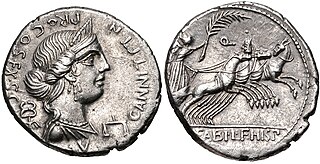
Anna Perenna was an old Roman deity of the circle or "ring" of the year, as the name clearly indicates. Her festival fell on the Ides of March, which would have marked the first full moon in the year in the old lunar Roman calendar when March was reckoned as the first month of the year, and was held at the grove of the goddess at the first milestone on the Via Flaminia. It was much frequented by the city plebs.
In Roman mythology, Dea Tacita was a goddess of the dead. Ovid's Fasti includes a passage describing a rite propitiating Dea Tacita in order to "seal up hostile mouths / and unfriendly tongue" at Feralia on 21 February. In later times, she was equated with the naiad Larunda. In this guise, Dea Tacita was worshipped at a festival called Larentalia on 23 December. Goddesses Mutae Tacitae were invoked to destroy a hated person: in an inscription from Cambodunum in Raetia, someone asks "ut mutus sit Quartus" and "erret fugiens ut mus". These silent goddesses are the personification of terror of obscurity. Plutarch, who describes Tacita as a Muse, states that Numa Pompilius credited Tacita for his oracular insight and taught the Romans to worship her.
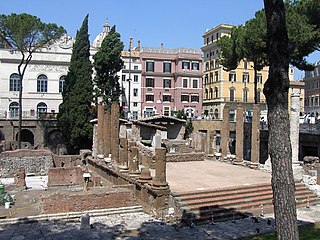
In the myth and religion of ancient Rome, Juturna, or Diuturna, was a goddess of fountains, wells and springs, and the mother of Fontus by Janus.
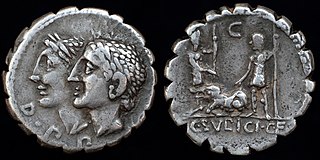
In ancient Roman religion, the Di Penates or Penates were among the dii familiares, or household deities, invoked most often in domestic rituals. When the family had a meal, they threw a bit into the fire on the hearth for the Penates. They were thus associated with Vesta, the Lares, and the Genius of the pater familias in the "little universe" of the domus.
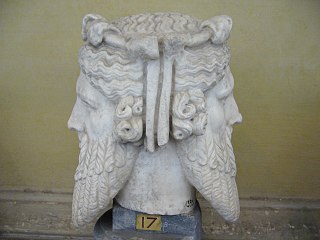
In ancient Roman religion and myth, Janus is the god of beginnings, gates, transitions, time, duality, doorways, passages, frames, and endings. He is usually depicted as having two faces. The month of January is named for Janus (Ianuarius). According to ancient Roman farmers' almanacs Juno was mistaken as the tutelary deity of the month of January, but Juno is the tutelary deity of the month of June.

Festivals in ancient Rome were a very important part in Roman religious life during both the Republican and Imperial eras, and one of the primary features of the Roman calendar. Feriae were either public (publicae) or private (privatae). State holidays were celebrated by the Roman people and received public funding. Games (ludi), such as the Ludi Apollinares, were not technically feriae, but the days on which they were celebrated were dies festi, holidays in the modern sense of days off work. Although feriae were paid for by the state, ludi were often funded by wealthy individuals. Feriae privatae were holidays celebrated in honor of private individuals or by families. This article deals only with public holidays, including rites celebrated by the state priests of Rome at temples, as well as celebrations by neighborhoods, families, and friends held simultaneously throughout Rome.
In Roman and Etruscan mythology, Mania was a goddess of the dead. She, along with Mantus, ruled the underworld. She was said to be the mother of ghosts, the undead, and other spirits of the night, as well as the Lares and the Manes. Her name links her to the Manes, Mana Genita, and Manius.
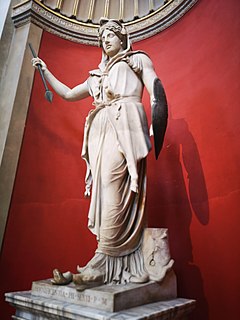
Juno was an ancient Roman goddess, the protector and special counsellor of the state. She was equated to Hera, queen of the gods in Greek mythology. A daughter of Saturn, she was the wife of Jupiter and the mother of Mars, Vulcan, Bellona and Juventas. Like Hera, her sacred animal was the peacock. Her Etruscan counterpart was Uni, and she was said to also watch over the women of Rome. As the patron goddess of Rome and the Roman Empire, Juno was called Regina ("Queen") and was a member of the Capitoline Triad, centered on the Capitoline Hill in Rome, and also including Jupiter, and Minerva, goddess of wisdom.

In ancient Roman religion and myth, Tellus Mater or Terra Mater is a goddess of the Earth. Although Tellus and Terra are hardly distinguishable during the Imperial era, Tellus was the name of the original earth goddess in the religious practices of the Republic or earlier. The scholar Varro (1st century BC) lists Tellus as one of the di selecti, the twenty principal gods of Rome, and one of the twelve agricultural deities. She is regularly associated with Ceres in rituals pertaining to the earth and agricultural fertility.

Maia, in ancient Greek religion, is one of the Pleiades and the mother of Hermes by Zeus.
Larunda was a naiad nymph, daughter of the river Almo in Ovid's Fasti.
Ferālia was an ancient Roman public festival celebrating the Manes which fell on 21 February as recorded by Ovid in Book II of his Fasti. This day marked the end of Parentalia, a nine-day festival honoring the dead ancestors.

Lares were guardian deities in ancient Roman religion. Their origin is uncertain; they may have been hero-ancestors, guardians of the hearth, fields, boundaries, or fruitfulness, or an amalgam of these.

In ancient Roman religion, the Compitalia was an annual festival in honor of the Lares Compitales, household deities of the crossroads, to whom sacrifices were offered at the places where two or more ways met. The word comes from the Latin compitum, a cross-way.

The di inferi or dii inferi were a shadowy collective of ancient Roman deities associated with death and the underworld. The epithet inferi is also given to the mysterious Manes, a collective of ancestral spirits. The most likely origin of the word Manes is from manus or manis, meaning "good" or "kindly," which was a euphemistic way to speak of the inferi so as to avert their potential to harm or cause fear.
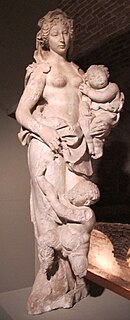
Remoria is a place associated with the legendary founding of Rome by Romulus and Remus where, according to Roman tradition, Remus saw six birds land and which he chose as an auspicious location for the future city. It is also where he was buried, after being killed by his brother Romulus during a dispute.















